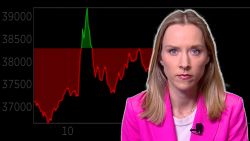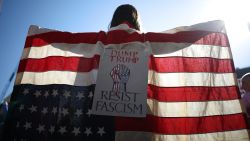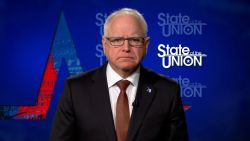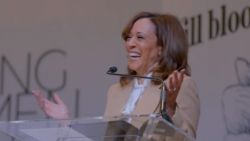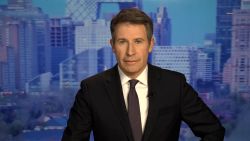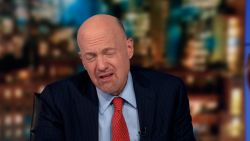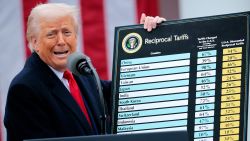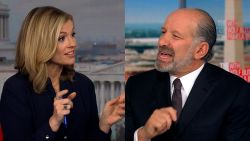While many nations are scrambling to strike tariff deals with Trump, China is standing up to him, hoping to turn “crisis into opportunity.”
Within 48 hours of Trump’s market-hammering announcement of tariffs on countries across the world, the world’s second-largest economy swiftly retaliated with its own punitive measures on US goods and firms.
Then, after the US president vowed to ratchet up tariffs again on Monday, Beijing once again vowed to hold the line. “The US threat to escalate tariffs on China is a mistake on top of a mistake,” its Commerce Ministry said a statement.
The threat “once again exposes the blackmailing nature of the US,” the statement said. “China will never accept it. If the US insists on its own way, China will fight to the end.”
Beijing’s defiance is part of what has appeared to be a carefully calibrated confidence from a Chinese government that’s decided to position itself an oppositional force standing up to what it calls “unilateral bullying” from the US.
Over the weekend, Beijing telegraphed a clear message for its domestic audience and foreign countries: China is well prepared to weather a trade war – and come out stronger on the other side.
“US tariffs will have an impact (on China), but ‘the sky won’t fall,’” a commentary in the ruling Chinese Communist Party’s mouthpiece People’s Daily said Sunday.
“Since the US initiated the (first) trade war in 2017 – no matter how the US fights or presses – we have continued to develop and progress, demonstrating resilience – ‘the more pressure we get, the stronger we become,’” read the commentary, which was also on the front page of the paper’s Monday edition.
With the “strong leadership” of China’s Communist Party and the country’s “institutional advantages,” China was “sure to turn crisis into opportunity and move steadily into the future,” the commentary said.
Trump on Wednesday unveiled an additional 34% tariff on all Chinese goods imported into the US, bringing duties on all Chinese imports to the US to well over 54% when existing tariffs are taken into effect. Beijing hit back Friday with its own baseline 34% tariffs on all American imports, as well as other measures, including export controls on rare earth minerals and trade restrictions on specific US companies.
On Monday, the US president threatened to significantly ratchet up the trade war between the world’s two largest economies by slapping an additional 50% tariffs on Chinese imports midweek if Beijing doesn’t remove its retaliatory tariffs by Tuesday.
The American president also said China’s “requested meetings” with the US would be canceled.

Beijing’s rhetoric in response speaks to what could be the strategic calculation of Chinese leader Xi Jinping and his cadres in Beijing: that Trump is not just using the tariffs as a negotiating tactic – and the epic disruption to global trade has the potential to hurt the US more than China.
“Many (People’s Republic of China) counterparts have argued (the) US is making a mistake that will undermine its own global standing,” Ryan Hass, a senior fellow at the Washington-based Brookings Institution think tank, wrote on the social media platform X on Sunday, following meetings with government officials, scholars, business leaders during a visit to China.
“There’s debate about whether the world is entering a period of blocs or a transition to an era of globalization minus the US. Beijing seems to prefer the latter scenario,” he said, adding that “China’s leaders will not countenance being seen as passive in response to US.”
‘Ready to compete’
As Trump’s tariffs target friends and foe alike, Chinese officials have already in recent weeks looked to project China as an alternative champion and protector of a globalized economy that’s enhanced the prosperity of countries around the world, as well as a stable economic partner and haven for business.
“As the world’s second-largest economy and the second-largest consumer market, China will only continue to open its doors wider, regardless of the changing international landscape,” China’s Foreign Ministry said in a statement on Saturday.
On Sunday, Ling Ji, a vice minister at China’s Commerce Ministry, hosted representatives from 20 US-funded enterprises including Tesla and GE HealthCare, according to a ministry statement.
Ling touted China as an “ideal, safe, and promising” place for investment, while calling on American businesses to “be rational voices” and “take practical actions” to maintain the stability of global production and supply chains.
Economic experts speaking to Chinese state broadcaster CCTV on Saturday also played into the idea that the trade shake-up was an opportunity for Beijing.
“China is sending a significant message to the world: we cannot back down or tolerate US bullying, as tolerance ultimately leads to more bullying,” said Liu Zhiqin, senior researcher at Chongyang Institute for Finance Studies in Renmin University of China, told the broadcaster.
“China and the US are now direct rivals in reshaping the international trade order,” said another, Ju Jiandong, a professor at the People’s Bank of China School of Finance of Tsinghua University. “We’re willing to take on the challenge – we’re ready to compete with the US in redefining the new global trade system.”
China’s trade partners are likely to take such messaging with a grain of salt.
Beijing is well known to have wielded access to its massive market as a weapon to coerce countries, often over political stances that sparked Beijing’s ire. Many will also be looking warily at whether Chinese exports will flood their own markets, hurting their own domestic production or driving down consumer prices.
But countries may have little choice but to look to strengthen ties with China if US tariffs, which hit American allies as well as rivals, become the new normal.
Beijing over the past month held economic talks with Japan and South Korea, hit last week with 24% and 25% tariffs respectively, as well as with the European Union, which was slapped with 20% duties.
Many Southeast Asian economies – key manufacturing hubs for companies looking to diversify away from China – have been hit particularly hard by Trump’s tariff war. While few want to pick a fight with Washington publicly, the region is rattled.
In Singapore, an ultra-connected free trade bastion known for treading a cautious diplomatic line, Prime Minister Lawrence Wong pulled few punches in a message to his fellow citizens over the weekend.
“The recent ‘Liberation Day’ announcement by the US leaves little room for doubt,” he said. “It marks a seismic change in the global order. The era of rules-based globalization and free trade is over. We are entering a new phase, one that is more arbitrary, protectionist and dangerous.”
Domestic challenges

China, however, is still bracing for impact – and what could be an extended period of escalation between the two governments and their leaders.
Xi’s defiance risks “locking both leaders into an escalation spiral. No high-level diplomacy means no safety valve – the longer this drags, the harder it becomes for either side to de-escalate without losing face,” Craig Singleton, a senior fellow at the US-based Foundation for Defense of Democracies, said last week.
Last year, US-China totaled roughly half a trillion in trade, and the tariffs come as China has been seeing some glimmers of economic vitality following years grappling with a property sector crisis, high local government debt and the fallout from Beijing’s pandemic controls.
The Chinese government last month announced a slew of measures to rev up domestic consumption as it anticipated the hit to its export-powered growth.
Now, China would “vigorously boost domestic consumption with extraordinary efforts … and introduce a series of reserve policies as appropriate,” according to the People’s Daily Sunday commentary.
Unlike in many other countries, however, how the Chinese Communist Party’s navigates these challenges – and its tolerance for economic pain – will not be judged by opinion polls or an electorate that can vote it out of power for how it navigates the challenge.
And in the shadow of Trump’s latest threat, the question of just how far – and fast – the trade war between the two largest economies could escalate looms even larger, with both governments still holding a number of options for how to ratchet penalties higher.
And the more they do, the more difficult it may be for the world’s two largest economies to find a way out.
This story has been updated with additional developments. CNN’s Joyce Jiang contributed reporting.






